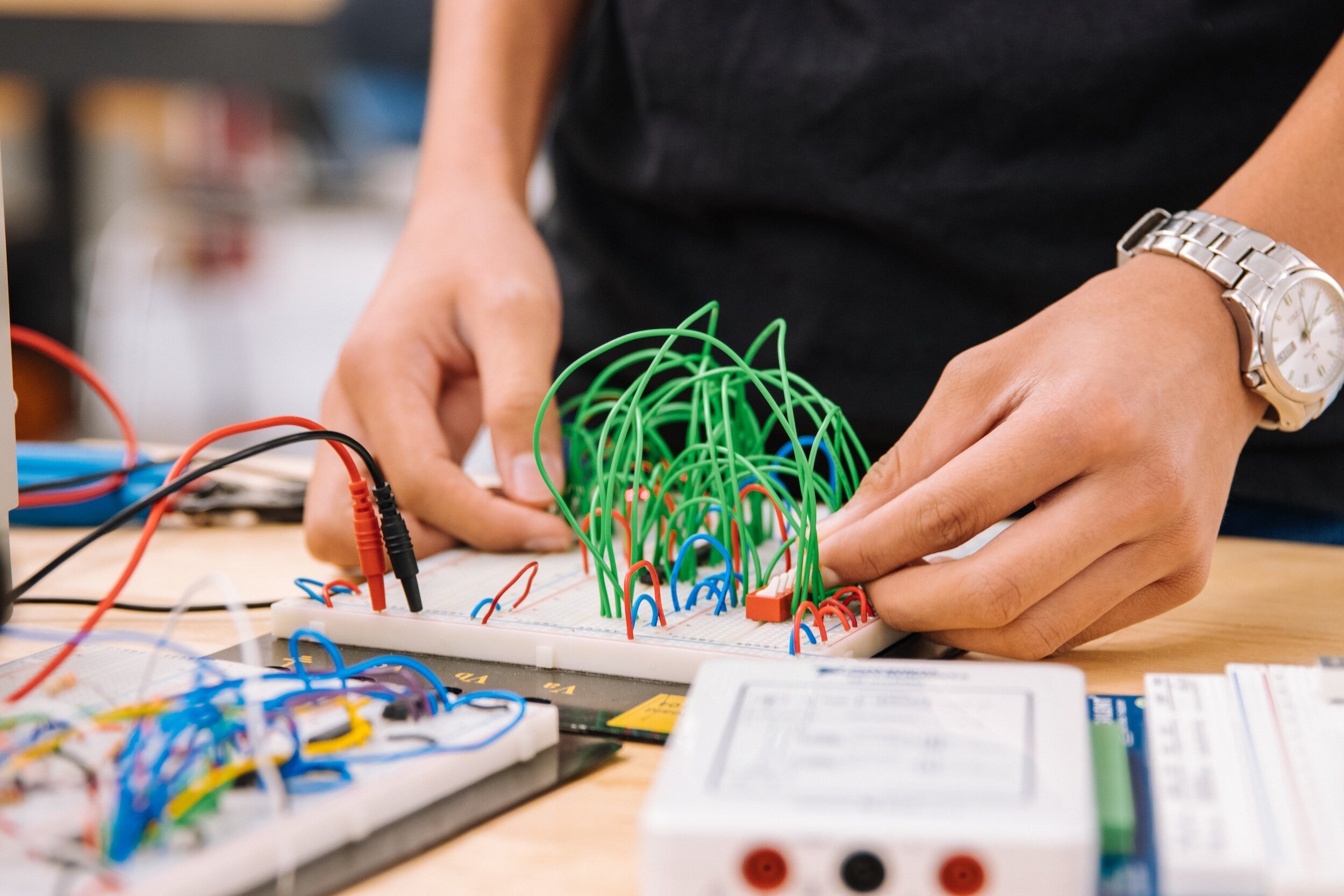Exciting STEM Projects for High School Students
High school is a great time for students to explore their interests and develop essential skills that will shape their future careers. STEM projects nurture students' curiosity and critical thinking, equipping them with problem-solving abilities and preparing them for the evolving technological world. In this blog, we will explore the benefits of a STEM project and the variety of projects suitable for high school students.
Benefits of STEM Projects for High School Students:
Below we are sharing some of the many benefits of working on STEM projects as a high school student.
Application of Knowledge: STEM projects enable students to apply the knowledge they learned in the classroom to real-world scenarios. Students can better grasp the ideas they study in classes like physics, biology, algebra, and computer science by applying them in real-world situations by working on projects.
Development of Critical Skills: STEM projects develop critical skills such as problem-solving, critical thinking, and creativity, as students are constantly Brainstorming of ways to make their project better and more efficient. These skills are vital for success in academic pursuits as well as future careers.
Hands-on Experience: STEM projects enable students to learn by doing, giving them invaluable hands-on experience. This type of experiential learning enhances their understanding of complex concepts and helps them grasp the underlying principles more effectively.
Career Exploration: High school students have fantastic opportunities to explore a variety of STEM subjects and develop an early sense of what they want to study in the future.
Personal Growth: STEM projects encourage students to step out of their comfort zones and overcome challenges. Students build resilience and a growth mindset as they learn to adapt, iterate, and improve their project designs and solutions.
Possible Requirements to Complete a Successful STEM Project:
Access to Resources: Students could require access to tools like lab supplies, computers, software, and materials for prototyping. Collaborations with local universities, research institutions, and community organizations can help bridge any resource gaps.
Supportive Learning Environment: A supportive learning environment is crucial for students to undertake STEM projects successfully. Teachers and mentors should provide guidance, facilitate discussions, and offer technical assistance to students throughout their project journey.
Collaboration Opportunities: Encouraging teamwork and collaboration among students is essential for STEM projects. Group projects promote communication, division of tasks, and the sharing of ideas, fostering a collaborative spirit that mirrors real-world STEM environments.
Mentorship and Guidance: Connecting students with industry professionals, researchers, or STEM experts can provide invaluable mentorship and guidance. Mentors can offer insights, share their experiences, and inspire students to pursue STEM careers.
Examples of STEM Projects for High School Students
Not sure where to get started? Get inspired by our list of STEM projects for high school students below.
ROBOTICS AND ENGINEERING PROJECTS:
Build a Robotic Arm:
Design and construct a robotic arm using basic materials like cardboard, motors, and Arduino boards. Learn about servo motors, kinematics, and control systems while assembling and programming the arm. Challenge yourself to perform specific tasks, such as picking up objects or stacking blocks, to test their robot's capabilities.
Construct a Solar-Powered Vehicle:
Use materials like a small motor, solar panels, and wheels to construct a solar-powered vehicle. Explore concepts of renewable energy, mechanical engineering, and electrical circuits. Organize a race to test the speed and efficiency of the solar-powered vehicles.
ENVIRONMENTAL SCIENCE PROJECTS:
Investigate Water Quality:
Gather water samples from nearby ponds, lakes, and rivers, then examine them for characteristics like pH, turbidity, and dissolved oxygen levels. Study the impact of pollutants on water quality and explore methods for water purification.
Design a Sustainable Urban Garden:
Designing a sustainable urban garden using limited space. Explore concepts of hydroponics, vertical gardening, and sustainable agriculture. Plan the layout, select appropriate plants, and experiment with different irrigation systems.
COMPUTER SCIENCE AND CODING PROJECTS:
Develop a Mobile App:
Learn the basics of app development and coding languages such as Java or Python. Identify a problem or need in your community and create a mobile app to address it.
Create a Website:
Learn development tools and languages like HTML, CSS, and JavaScript. Build a website on a topic that you are passionate about, such as environmental conservation, mental health awareness, or historical events., etc. Emphasize the importance of user experience and design principles while developing the website.
Conclusion
The engagement of high school students in exciting STEM projects holds immense potential for their personal and academic development. These projects provide a platform for students to apply their theoretical knowledge in practical, real-world scenarios, fostering a deeper understanding of STEM concepts. Engaging students in STEM projects unlocks their potential, cultivates a love for lifelong learning, and nurtures the innovators and problem solvers of tomorrow. The possibilities are endless, and it is through projects that high school students can unleash their full potential and embark on a journey of exploration and discovery.
About Inspirit AI
AI Scholars Live Online is a 10 session (25-hour) program that exposes high school students to fundamental AI concepts and guides them to build a socially impactful project. Taught by our team of graduate students from Stanford, MIT, and more, students receive a personalized learning experience in small groups with a student-teacher ratio of 5:1.

